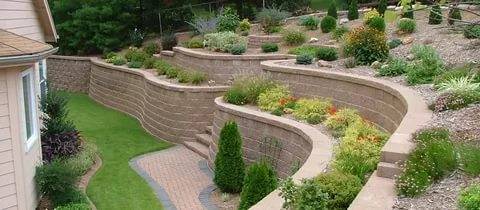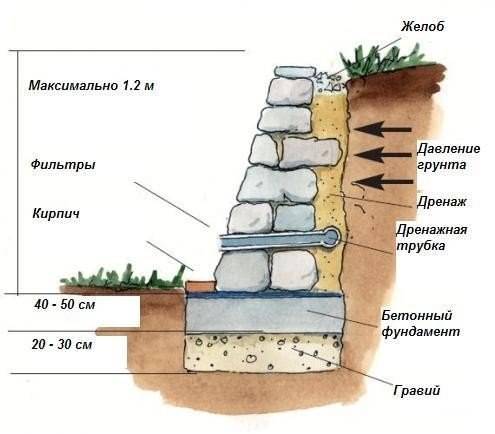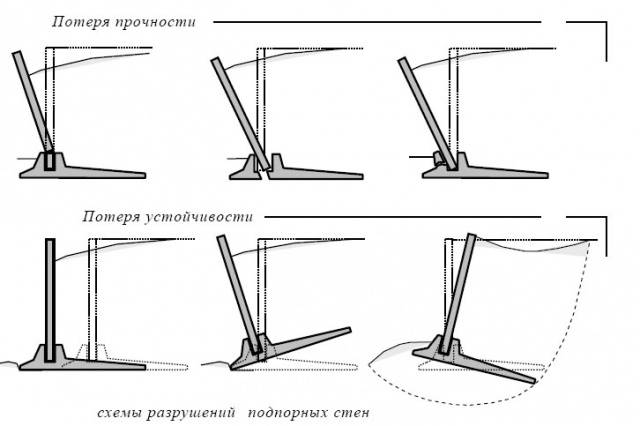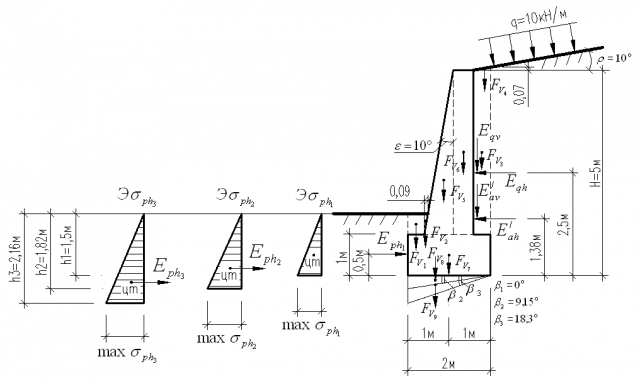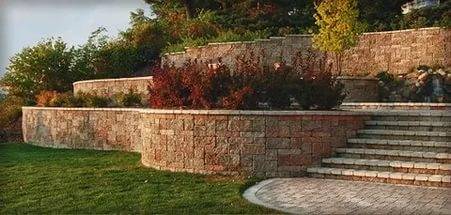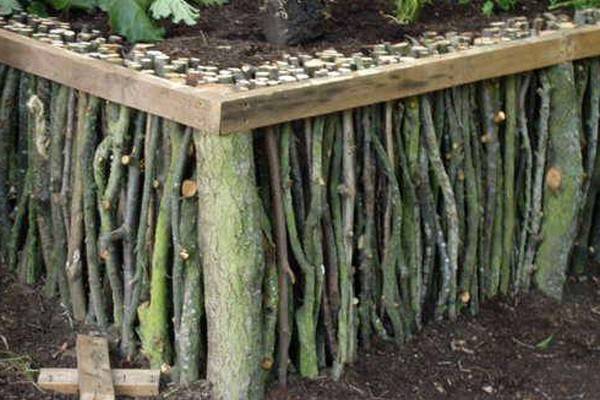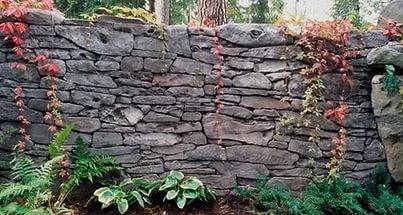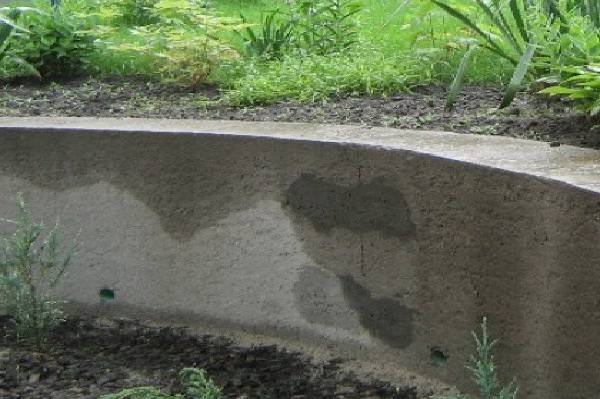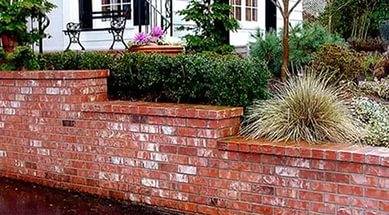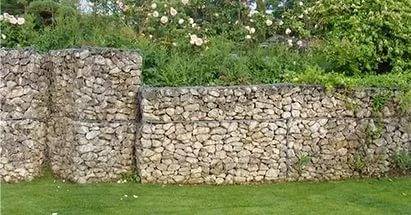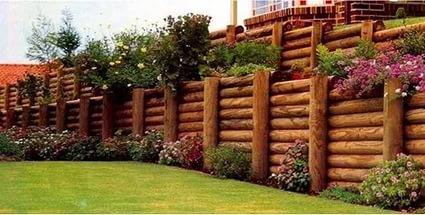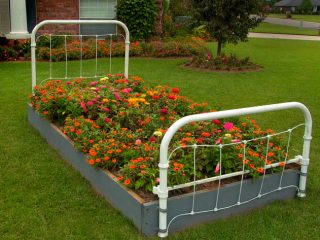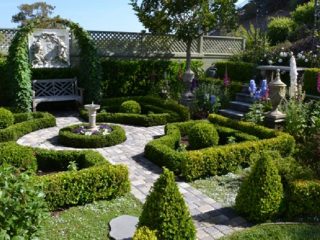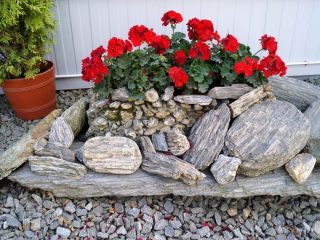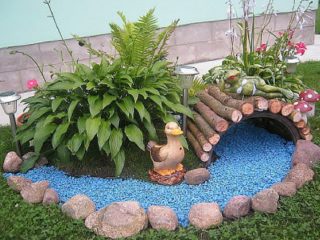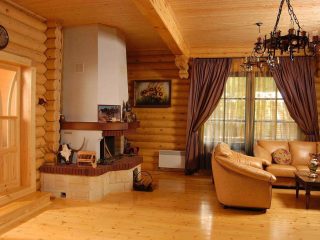Content
The development of a hilly plot of land is not complete without the construction of retaining walls. These structures prevent soil sliding. Retaining walls look good in landscape design if they are given a decorative look.
The role of retaining walls in landscape design
It’s good if the dacha or country house is located on a plain. Just tiling the yard and no worries. To arrange a hilly area, you will have to work a little, constructing decorative supports. Things are more complicated in the yard located near a large slope. Only serious structures will help to avoid the danger of soil sliding. You will have to build powerful retaining walls from concrete or stone.
Even if the wall is built as a serious supporting structure, it should still be used in the landscape as a decoration. After finishing, for example, a concrete wall with decorative stone, the yard will become more beautiful and richer.
Landscaping using retaining walls allows you to make good use of every piece of land.It is unlikely that it will be possible to grow anything on a steep slope, but such a structure will divide the useless area into a zone of terraces. By pouring a small layer of fertile soil, you can organize beds, flower beds on the terraces, or simply set up a garden of fruit or ornamental trees.
In a slightly hilly area, a single-tier structure in the form of an ordinary wall will be sufficient. A large slope is turned into a multi-tiered area resembling steps. The body of the step, that is, the wall itself, keeps the soil from sliding, and green spaces grow between the structures.
Main components of a retaining wall
The design of the retaining wall is simple. All components of the structure can be seen in the photo. The main design elements are:
- Base or foundation The structure is located underground. This part bears the main load from the ground. The stability of the entire retaining wall depends on the strength of the foundation.
- Body of the structure is a visible above-ground structure directly connected to the foundation. The wall is made of wood, brick, stone, concrete and other materials.
- Drainage system ensures water drainage, thereby preventing destruction of the wall.
Backfilling with crushed stone or gravel helps ensure better stability of the retaining wall.
Independent calculation of retaining wall dimensions
Before you start designing the landscape, you need to make important calculations for the future structure, because in addition to decoration, the wall will keep the slope from sliding.
The standard height of the structure ranges from 0.3 to 1.5 m, although it is not recommended to build a wall higher than 1.2 m yourself. When designing a structure, it is necessary to take into account that its resistance must exceed the force of the retained soil.
To calculate the thickness of the foundation, a conditional coefficient of 0.6 is multiplied by the height of the above-ground part. Determine the ratio of base thickness to wall height based on soil density:
- with high soil density the ratio is 1:4;
- with average soil density, the ratio is 1:3;
- on clay, sandy and other soft soils, the thickness of the base should be 50% of the length of the above-ground part.
For a site with dangerous geodesy, you cannot design retaining walls yourself; it is better to turn to specialists.
Retaining structure design
So, we found out that, first of all, a retaining wall allows you to develop a problem plot of land and protects the yard from soil sliding. However, it is important to pay attention to the design of the structure. An accurate definition of its purpose in the landscape will help to make the structure aesthetically pleasing.
Capital structures are most often built from reinforced concrete or cobblestones. Decorative stone and other facing materials are used for their finishing.For the construction of decorative walls, any material is used: wood, gabions, decorative brick, etc.
Even if you don’t have enough money to decorate a concrete wall, don’t despair. In this case, you need to resort to design tricks. For example, plant decorative climbing plants. Alternatively, they can be placed at the foot of the wall so that they trail up the trellis or planted in the ground on top of the structure. In this case, the vines will hang beautifully along the wall.
When special attention is paid to the design of a retaining wall without limiting funds, the most daring ideas are used. The structure is decorated with lighting, all kinds of figures and figurines, forging, flowerpots, etc.
Review of retaining walls made of different materials
To have a better idea of the different types of structures, let’s take a look at the photo at retaining walls in the landscape design of a private yard.
Stone structures
Any large stones of natural origin are suitable for the construction of capital walls. Using cobblestones of different colors, you can lay out simple patterns like a mosaic. The foundation is erected 3 times wider than the above-ground part. The thickness of the base is determined by calculations. Under a stone wall, it is better to make the foundation from concrete, and it is important not to forget to add a 300 mm cushion of gravel and sand under it.
After the concrete hardens, perforated drainage pipes are laid along the foundation to drain water into the ravine.You can make drainage without pipes, leaving gaps in the wall masonry. Only in this case, the water will not flow into the ravine, but onto the sidewalk path near the wall, which is not always convenient.
The laying of stones begins with the largest cobblestones, holding them together with cement mortar. It is important to maintain a slope of the above-ground part from 5 to 10O towards the ground. The finished structure is decorated with climbing plants and other available decorative elements.
Concrete structures
Depending on the properties of the soil, concrete walls are poured with a thickness of 250 to 500 mm. To improve stability, a third of the height of the above-ground structure is buried in the ground. Only a monolithic wall can be strong. Concrete must be poured with as few interruptions as possible, so you will have to prepare a lot of boards or other material for arranging the formwork.
The concreting process itself is simple, but very difficult. First, the foundation is poured with concrete. It is again important not to forget about the 300 mm cushion of crushed stone and sand. If the above-ground part is higher than 1 m, vertically extending reinforcement is built into the foundation according to the height of the future wall. Further work involves arrangement of formwork and layer-by-layer pouring of concrete.
When the completely finished wall hardens, waterproofing is applied on the ground side, a drainage system is installed and the soil is backfilled. The front side of the wall is usually finished with decorative stone.
Brick construction
Red solid bricks are used for laying the walls. Without a foundation, it is allowed to erect a low decorative structure with a height of 250 mm. It turns out to be a kind of border laid on a sand and gravel cushion. Structures with a height of more than 250 mm are installed only on the foundation.The calculation of the dimensions of the base is carried out in the same way as for a stone wall.
If the height of the above-ground part does not exceed 600 mm, half-brick masonry is allowed. Walls of greater height are laid in brick, that is, about 250 mm thick. The laying is done using cement mortar. Waterproofing is applied to the rear part and drainage is laid. On the front side you can simply do the seams, or veneer it at your discretion.
Gabion construction
A durable and beautiful retaining wall is made from gabions. Stones of different sizes and colors are placed in containers made of galvanized mesh. It turns out the same stone wall, only without cement and foundation. To save money, beautiful stones are placed along the edges on a visible plane, and the void is filled with rubble, broken bricks and other construction debris. The gabions are connected to each other with wire staples and fixed to the ground with metal pins.
After filling the entire gabion with stone, close the top cover. There is no need to deal with waterproofing and drainage. Stone laid without mortar will allow water to pass through perfectly.
Wooden structures
Wood lends itself well to processing and has an attractive appearance, but it quickly rots, so it must be well protected from moisture. The entire protection process involves a number of measures, consisting of impregnating the wood with special antiseptic solutions, covering the inside of the wall with roofing felt, plus high-quality drainage arrangement using perforated pipes.
Decorative wooden walls are made from any pegs, planks and other similar preparations. Large supporting structures are installed from vertically or horizontally located logs.A trench is dug under the structure with a depth equal to half the height of the above-ground part. The bottom is covered with a 100 mm layer of sand and a 150 mm layer of crushed stone. That part of the logs that will be in the ground is treated with bitumen, and then lowered into the trench. The logs are tied together with wire, staples, and nails, and the trench is filled with concrete.
The video talks about retaining walls on a personal plot:
Conclusion
With a little imagination, you can make a retaining wall on your site from any available material. Even old car tires are used. When the structure meets all its strength requirements, you can begin design work.
